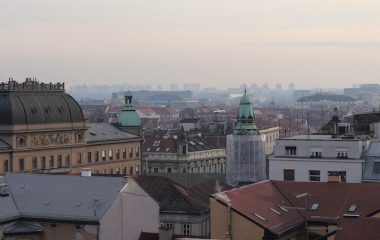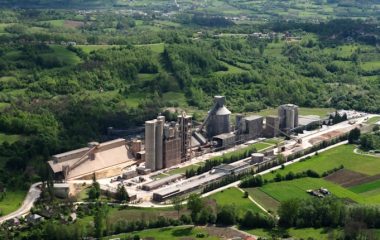
Photo: katastarrudarskogotpada.rs
A total of 250 abandoned mining waste sites were monitored as part of the project Cadastre of Mining Waste of the Republic of Serbia, carried out by the Ministry of Mining and Energy in cooperation with the EU Delegation in Serbia and implemented by German companies Plejades GmbH Independent Experts and DMT in cooperation with the local partner, the Institute of Mining and Metallurgy Bor.
A total of 41 locations were selected for further investigation in the next phase of the project. The data obtained will be presented in the Cadastre of Mining Waste database, which is to be created in Serbia for the first time. The project is aimed at harmonization with the EU legislation and developing and improving the mining waste management system in the Republic of Serbia.
In line with the Law on Mining and Geological Exploration adopted in 2015, the Ministry of Mining and Energy, with the financial assistance from the European Union, is implementing the three-year project with the aim of producing systematic and comprehensive data on active and abandoned mining waste sites in the Republic of Serbia.
During the first year of the project, a total of 250 abandoned mining waste sites across Serbia were visited. This activity represents the first important step in establishing responsible and sustainable mining waste management. Basic data was obtained on visited locations, mining waste types and quantities, on landfills that represent potential physical hazards and possible adverse effects on the environment and human health.
The obtained data will be presented in the form of a web application and a book of the Cadastre of Mining Waste that will contain both locations of active mines and locations of abandoned mining waste.
Regarding the implementation of activities planned for the first year of the project, the Ministry of Mining and Energy stated:
“The mining sector is recording increasingly significant results in the Republic of Serbia. There are currently 25 companies involved in geological exploration, and the mining sector’s share of Serbia’s GDP could grow to 5%. However, a sustainable and responsible management of the mining sector also requires investigation and assessment of environmental risks possibly associated with mining waste at abandoned sites. The Cadastre of Mining Waste project aids us in identification, examination, and classification of all locations that are yet to be remediated and for the potential– and in some locations, real –environmental, safety, and health threats and hazards to be removed.”
41 locations selected for further examination
In the next phase, the project will investigate and analyze 41 mining waste sites in detail. These sites were selected as to assess their potential serious impact on the environment and human beings. The selected sites are in the following municipalities: Čajetina (4), Nova Varoš (2), Raška (7), Krupanj, Loznica, Prijepolje, Knjaževac, Zaječar (2), Crna Trava, Surdulica, Mandanpek (3), Voždovac, Kučevo, Aleksinac (2), Mali Zvornik, Kragujevac grad, Boljevac, Zaječar, Brus, Ljubovija (3), Žagubica-Bor and Dimitrovgrad.
The amount of waste in the selected sites accounts for 90% of the entire mining waste on all the visited abandoned mining waste sites (250 locations in total).
Results from investigation of these 41 locations will be presented in a report containing detailed data for each site – including site description, results from chemical and geotechnical analyses and an assessment of the impact on the environment (in particular, the effects mining waste has on the quality of groundwater and surface water and soil) and possible effects on human health.
The EUR 2.1 million project is 90% funded by the EU and 10% by the Government of the Republic of Serbia.


















Be the first one to comment on this article.